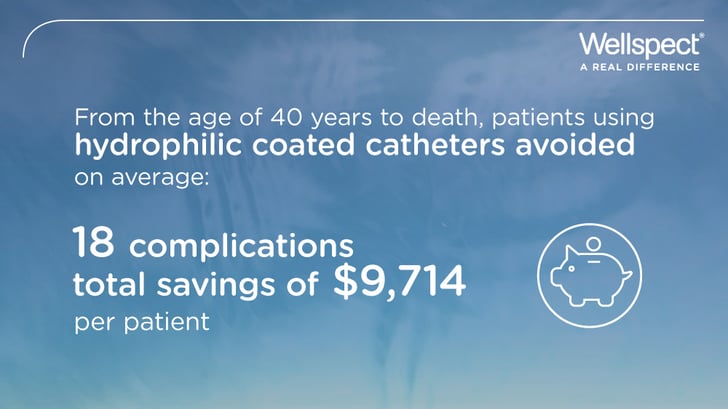As many as 18 complications can be avoided from the age of 40 until death when using hydrophilic catheters instead of non-coated catheters. This translates into savings of almost $10,000 per patient.

In the U.S, all intermittent urinary catheters covered by an insurance plan and coded with the same HCPCS code are reimbursed at the same level. However, clinical evidence suggests efficacy differences between catheters.
The objective of this study was to perform a health economic evaluation of hydrophilic coated catheters compared to non-coated catheters in the U.S. setting.
At the same reimbursement level, the hydrophilic coated catheter was found to result in both health benefits and substantial cost-savings compared to the non-coated catheter.
This translated into total savings of $9,714 per patient over a life-time horizon. The cost per hydrophilic catheter could be increased by 15% and still result in cost-savings.
Find out more in the summary of this study, containing method description, results and conclusion.




